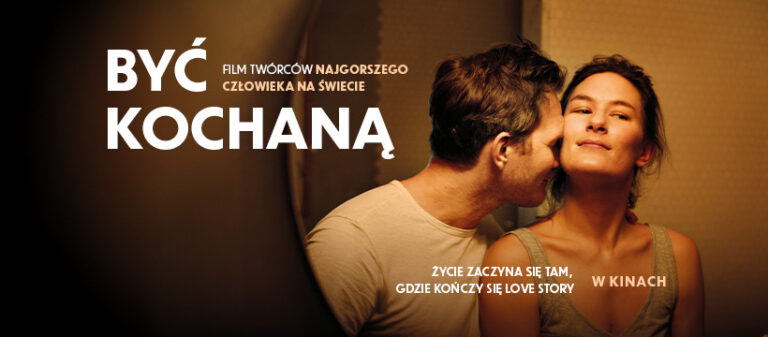
“Amelia”. Opowieść o potędze spraw nieistotnych
Ciężko jest czegoś szukać, gdy nie wie się, co to jest…
Amelia mieszka wprawdzie w Paryżu, ale żyje w swoim własnym świecie. Pracuje w kawiarni, wynajmuje mieszkanie. Życie wydaje się być dla niej nudne, ale generalnie jej pasuje. Z wyjątkiem tego, że jest samotna.
Pewnego dnia Amelia odkrywa w swoim mieszkaniu stare pudełko ze skarbami z dzieciństwa i potajemnie zwraca je właścicielowi w średnim wieku. Zmienia to jego życie – i także jej życie. Od teraz wszystko się zmienia.
“Amelia” Jean Pierre Jeuneta (“Delicatessen”, “Miasto zaginionych dzieci”) była wielkim przebojem polskich kin na początku obecnego stulecia. Znany z oryginalnego stylu francuski twórca wykorzystał osobliwy charakter swojego filmowego pisma, by przedstawić wyjątkową historię młodej paryżanki szukającej miłości. Dzięki tej zabawnej i wzruszającej opowieści do gwiazd pierwszej wielkości francuskiego kina awansowała 24-letnia wówczas Audrey Tautou, której partneruje Mathieu Kassovitz.
“Amelia” zdobyła 4 francuskie Cezary, 2 nagrody BAFTA, nagrody publiczności (m.in. Europejskiej Akademii Filmowej, MFF Toronto,) oraz wiele wiele innych wyróżnień. Przede wszystkim zdobyła serca publiczności na całym świecie.
Wielki powrót Kici Koci do kin! Ulubiona kotka wszystkich dzieci i jej przyjaciele zapraszają do kin na zupełnie nowe przygody! Razem z ulubionymi bohaterami zdecydujemy co zasiać w ogródku, odwiedzimy dentystę i poznamy Nunusia – małego braciszka Kici Koci!
Uwielbiana przez najmłodszych rezolutna Kicia Kocia powraca i jest gotowa stawić czoła nowym wyzwaniom! Jej perypetie są pełne zabawy, radości i odzwierciedlają dziecięcą codzienność. Tym razem bystra kotka i jej wierni przyjaciele – Pacek, Adelka i Julianek – pobawią się w aptekę oraz pokażą młodym widzom jak wygląda wizyta u dentysty i jak radzić sobie ze złością. Wraz z Kicią Kocią wybierzemy co zasiać w ogródku, przywitamy wiosnę oraz poznamy jej małego braciszka Nunusia!
Filmowe opowieści na podstawie uwielbianych książek Anity Głowińskiej to idealna okazja na niezapomniany seans w kinie. Serial „Kicia Kocia” na wielkim ekranie!
Odcinki serialu, które zobaczymy w trakcie seansów:
- Kicia Kocia. Wiosna!
- Kicia Kocia w aptece
- Kicia Kocia się złości
- Kicia Kocia u dentysty
- Kicia Kocia. Co zasiejemy w ogródku?
- Kicia Kocia ma braciszka Nunusia
- Kicia Kocia na plenerze
„Ścieżki życia” to inspirowana prawdziwymi wydarzeniami poruszająca i pełna nadziei opowieść o dojrzałej miłości, która okazuje się silniejsza niż życiowe kryzysy. Film, który zdobył serca widzów w całej Europie, zachwyca szczerością oraz prostotą, z jaką mówi o sprawach najważniejszych. To historia, która podnosi na duchu i przypomina, że nawet po największej burzy można odnaleźć spokój – jeśli idzie się razem.
Raynor (Gillian Anderson) i Moth (Jason Isaacs), małżeństwo z wieloletnim stażem, w jednej chwili tracą niemal wszystko – dom, bezpieczeństwo, dotychczasowe życie. Zamiast się poddać, robią coś, co dla wielu byłoby szaleństwem: wyruszają w pieszą wędrówkę – ponad tysiąc kilometrów wzdłuż dzikiego, angielskiego wybrzeża. Z pustym kontem bankowym, namiotem i garścią najpotrzebniejszych rzeczy idą przed siebie, krok za krokiem, szukając ukojenia w wietrze, ciszy i otaczającej ich przyrodzie. Wkrótce odkryją, że mimo przeszkód, które los rzucił im pod nogi, wciąż mają najważniejsze – siebie nawzajem. Ta niezwykła podróż stanie się dla nich drogą ku wolności, miłości i nowemu początkowi.
„Piernikowe serce” to świąteczna komedia romantyczna z dużą dawką humoru, emocji i aromatu pierników!
Pachnie cynamonem, rozbrzmiewa śmiechem i rozgrzewa serca nawet najbardziej skłóconych bohaterów.
Justyna i Czarek wracają z synem do rodzinnego domu w Toruniu, gdzie czeka ich nie tylko konfrontacja z przeszłością, ale też szansa na nowy początek. Dagmara, próbuje spełnić marzenie zmarłego ojca i otworzyć kawiarnię, choć życie nieustannie rzuca jej kłody pod nogi. Samanta i Paweł, sąsiedzi z temperamentem, wnoszą do tej układanki mnóstwo koloru, energii i nieoczekiwanych zwrotów akcji.
To film o rodzinie, miłości i drugich szansach. O tym, że nawet jeśli wszystko się sypie, święta potrafią posklejać to, co najważniejsze.
Bo przecież w święta wszystko jest możliwe — nawet cud.
OBSADA: Jakub Strach, Weronika Mania, Stefan Pawłowski, Olga Bołądź, Katarzyna Żak, Barbara Kurdej-Szatan,
Piotr Głowacki, Dorota Zięciowska, Małgorzata Socha, Mikołaj Roznerski, Bogdan Kalus
„Być kochaną” – nowy film producentów „Najgorszego człowieka na świecie” – przewrotnie przypomina, że najważniejsza z miłości to ta, którą obdarzamy siebie samych. Czerpiąc z własnych doświadczeń, debiutująca w pełnym metrażu Lilja Ingolfsdottir stworzyła wielowymiarową opowieść o kobiecie, która po porażce pierwszego związku ma odwagę dać sobie drugą szansę. Wyróżniony aż pięcioma nagrodami na festiwalu w Karlowych Warach oraz niekwestionowany zwycięzca norweskiego odpowiednika Oscarów, „Być kochaną” urzeka empatią i szczerością w stawianiu pytań o miłość, bliskość i samoakceptację.
Maria (Helga Guren) wchodzi w kolejną relację z nadzieją na nowy początek. Wystarczy jedno spojrzenie i czuje się, jakby znała Sigmunda (Oddgeir Thune) całe życie, a namiętny romans szybko przeradza się w poważny związek. Historia w „Być kochaną” zaczyna się tam, gdzie kończy się większość love stories. Codzienność w patchworkowej rodzinie szybko ujawnia niespełnione ambicje, niewyrażone uczucia i sprzeczne potrzeby, które kumulują się w emocjonalną bombę – a ta pewnego wieczoru wybucha.
W „Być kochaną” przejrzy się wiele kobiet, które starają się pogodzić bycie partnerką i matką, bez rezygnowania z siebie. Empatyczny, ale stawiający na szczerość, pełen gniewu i łez, a jednak terapeutyczny film Norweżki proponuje głęboką refleksję nad tym, kim jesteśmy w relacjach i z czego rezygnujemy, próbując sprostać cudzym oczekiwaniom. „Być kochaną” pozwala jednak uwierzyć w kolejną szansę, widząc w kryzysie początek pięknej, nowej relacji: ze sobą.



